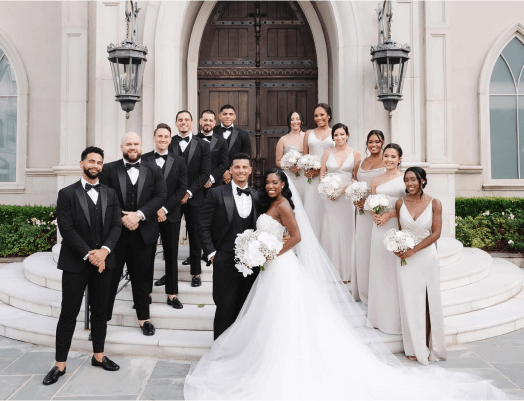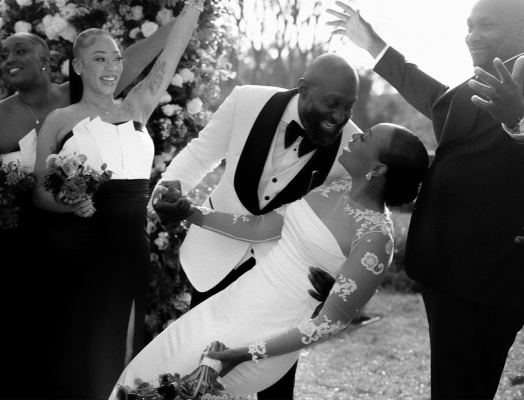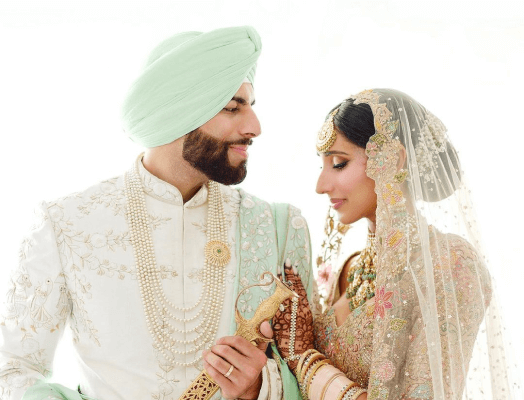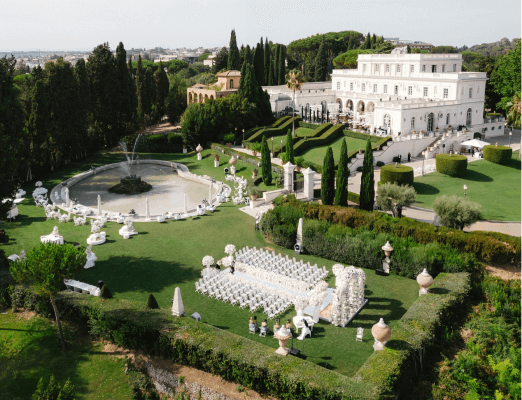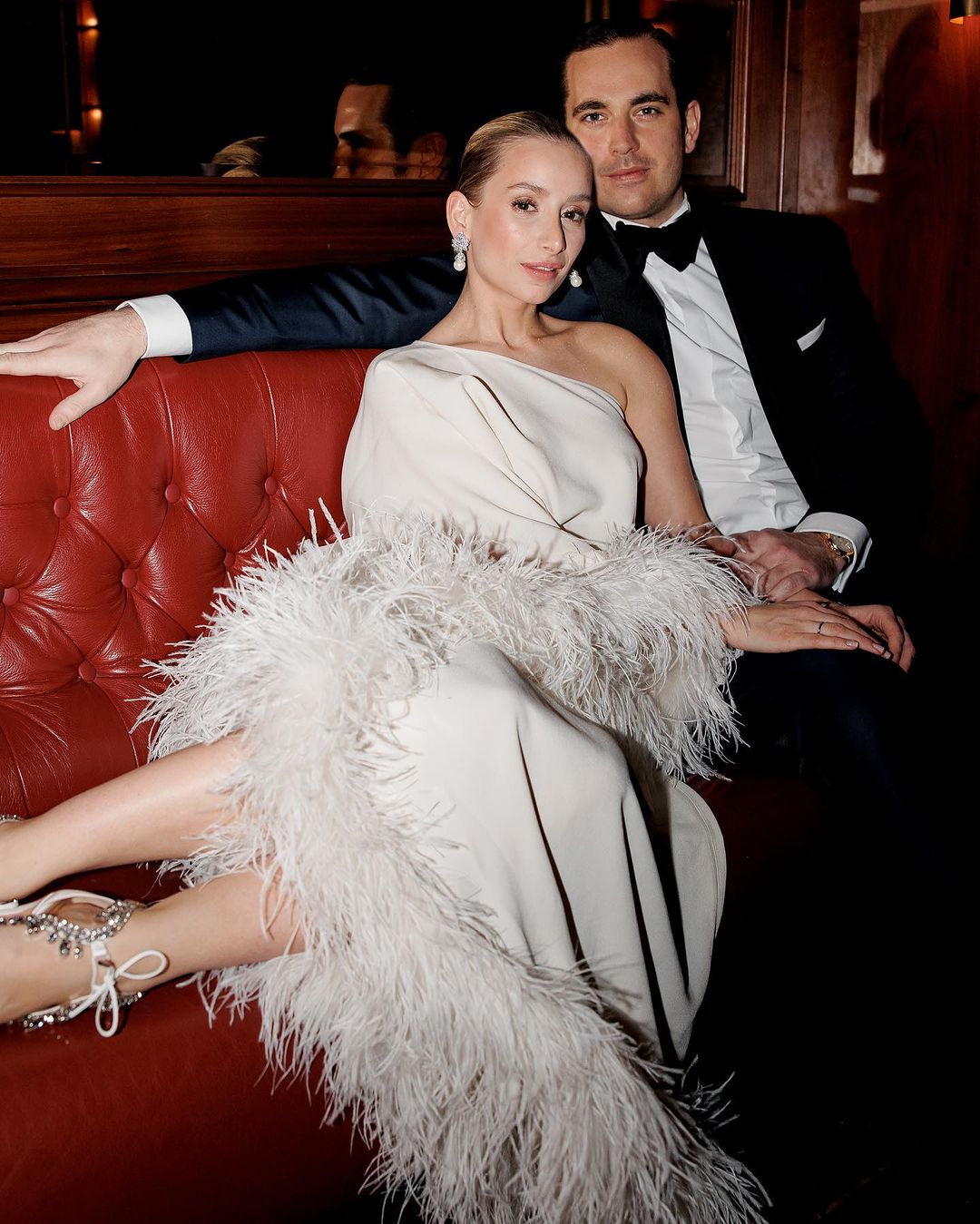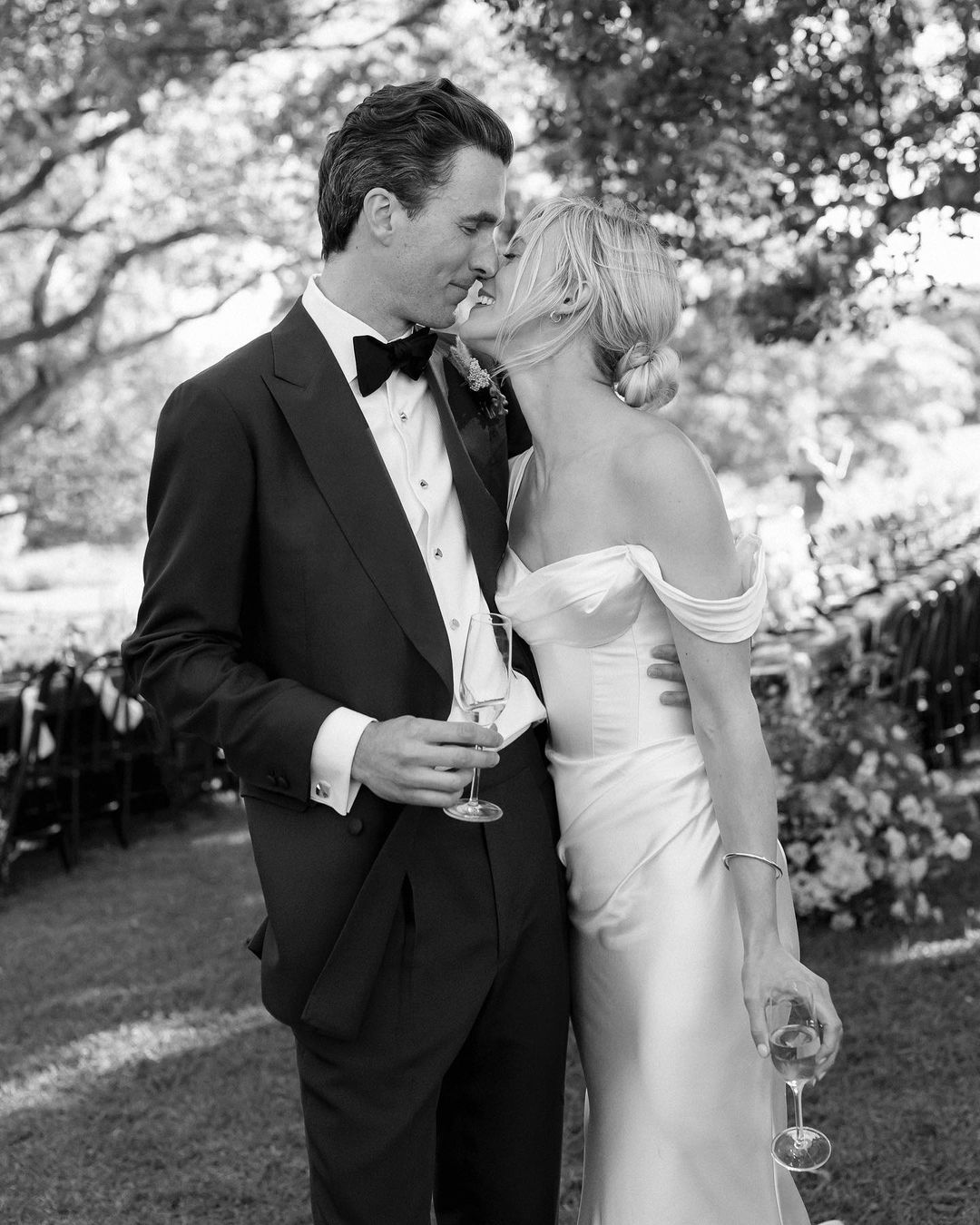Kilts in Scottish Weddings
- Author: Natali Grace Levine
- Reading time: 9 min 43 sec
- Publication date: 07/19/2024
- Updated: 08/15/2025
Scottish weddings are renowned for their rich traditions and unique customs that create an unforgettable experience. From the picturesque highlands to the historic castles, Scotland offers stunning venues for a romantic ceremony. A traditional Scottish wedding often includes a handfasting ceremony, where the couple's hands are tied together with a ribbon to symbolize their union. Bagpipes frequently play a significant role, adding a distinct musical element to the celebration. The bride and groom may also exchange vows in Gaelic, honoring their heritage. Another cherished custom is the quaich ceremony, where the couple drinks from a two-handled cup to signify their shared future. Scottish weddings are also famous for lively ceilidh dances, where guests participate in traditional folk dancing. The combination of historical elements and joyful festivities makes Scottish weddings truly special.
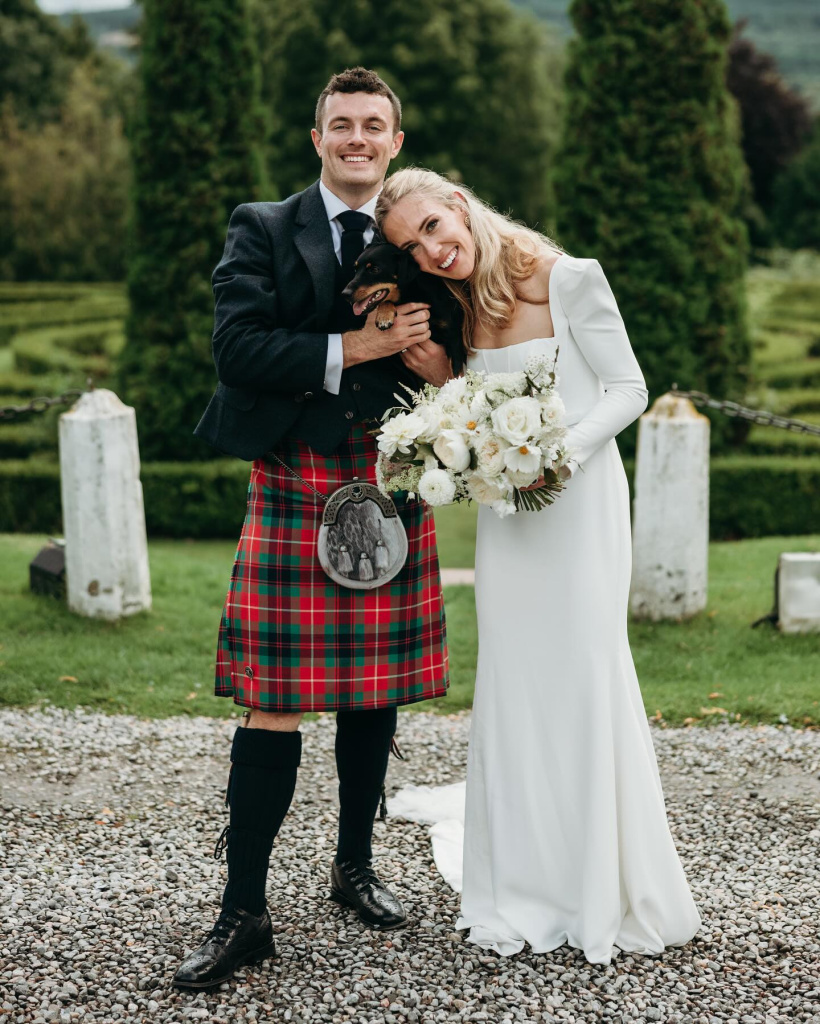
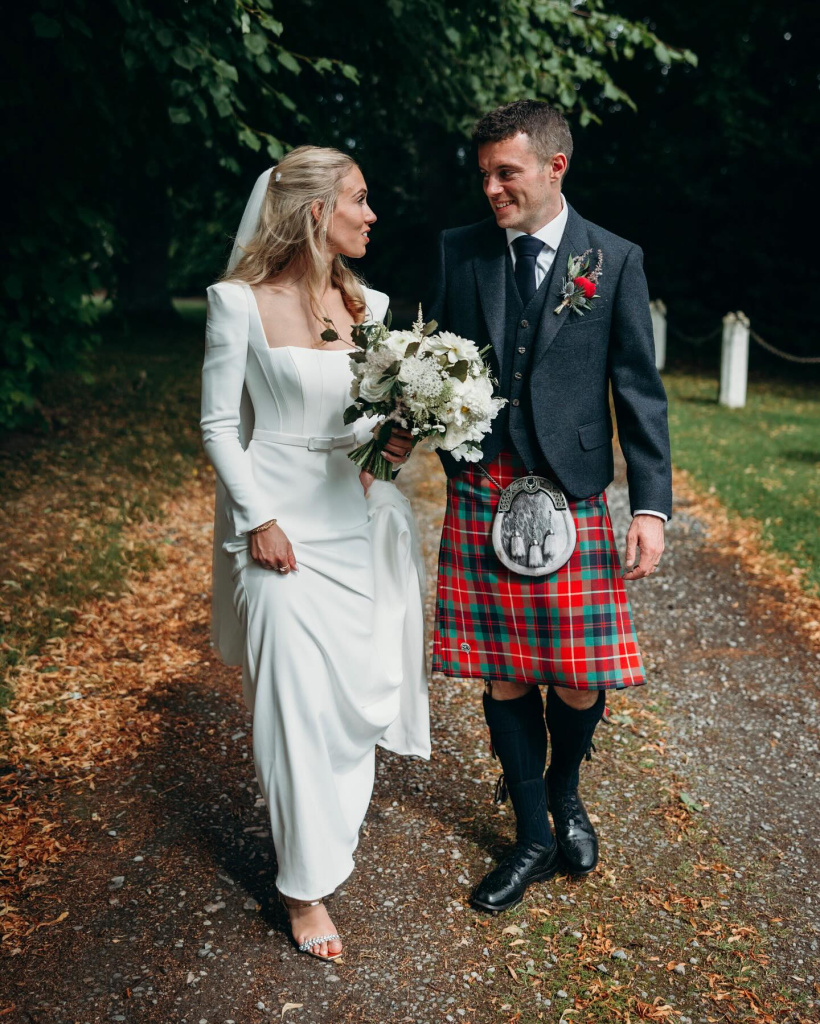
Find Your Perfect Wedding Vendors
Importance of Tradition in Scottish Culture
Tradition holds a profound significance in Scottish culture, permeating various aspects of daily life and special occasions. One of the most cherished traditions is the celebration of Hogmanay, the Scottish New Year, marked by unique customs such as "first-footing" and the singing of "Auld Lang Syne." In Scottish weddings, traditions like the handfasting ceremony and the wearing of clan tartans are integral, connecting the couple to their ancestry. The importance of tradition is also evident in the Highland Games, which celebrate Scottish sports, music, and dance, fostering a sense of community and heritage. Traditional music, particularly bagpipes, plays a crucial role in both public ceremonies and private gatherings. Scottish cuisine, with its iconic dishes like haggis and shortbread, reflects historical culinary practices. Language preservation efforts, especially for Gaelic, demonstrate a commitment to cultural heritage. Additionally, traditional Scottish dress, including the kilt, signifies pride in national identity. Overall, traditions in Scotland serve as a bridge between past and present, ensuring that cultural heritage is celebrated and preserved for future generations.
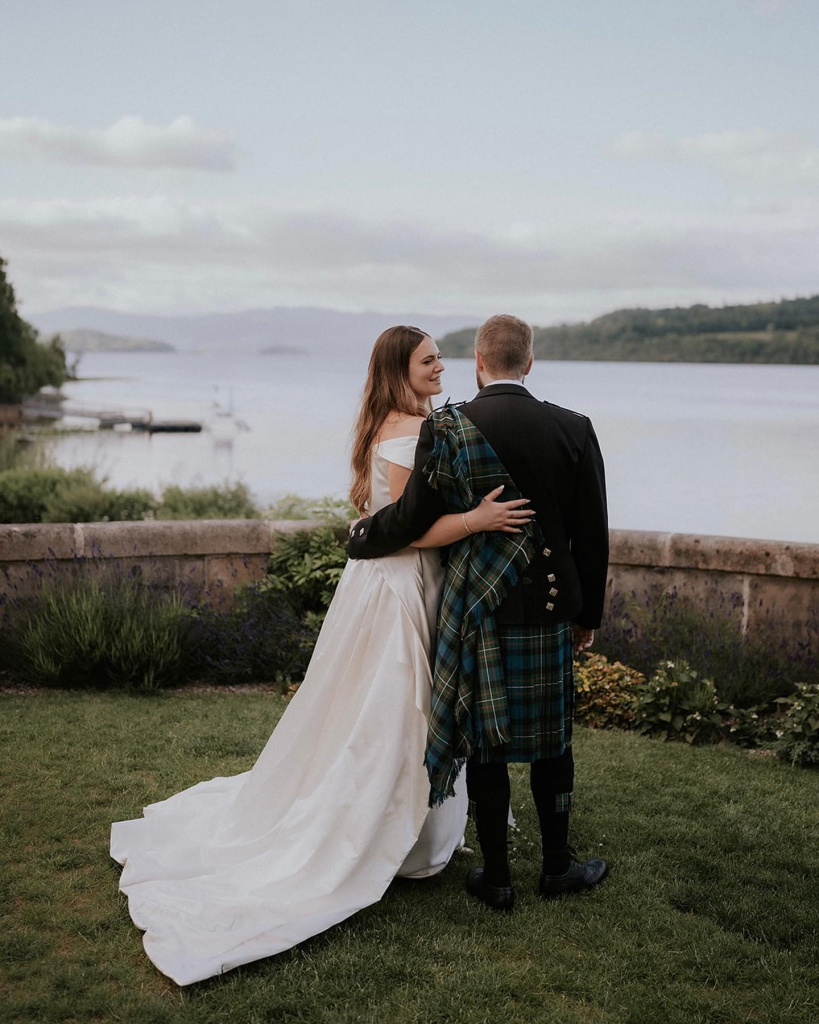
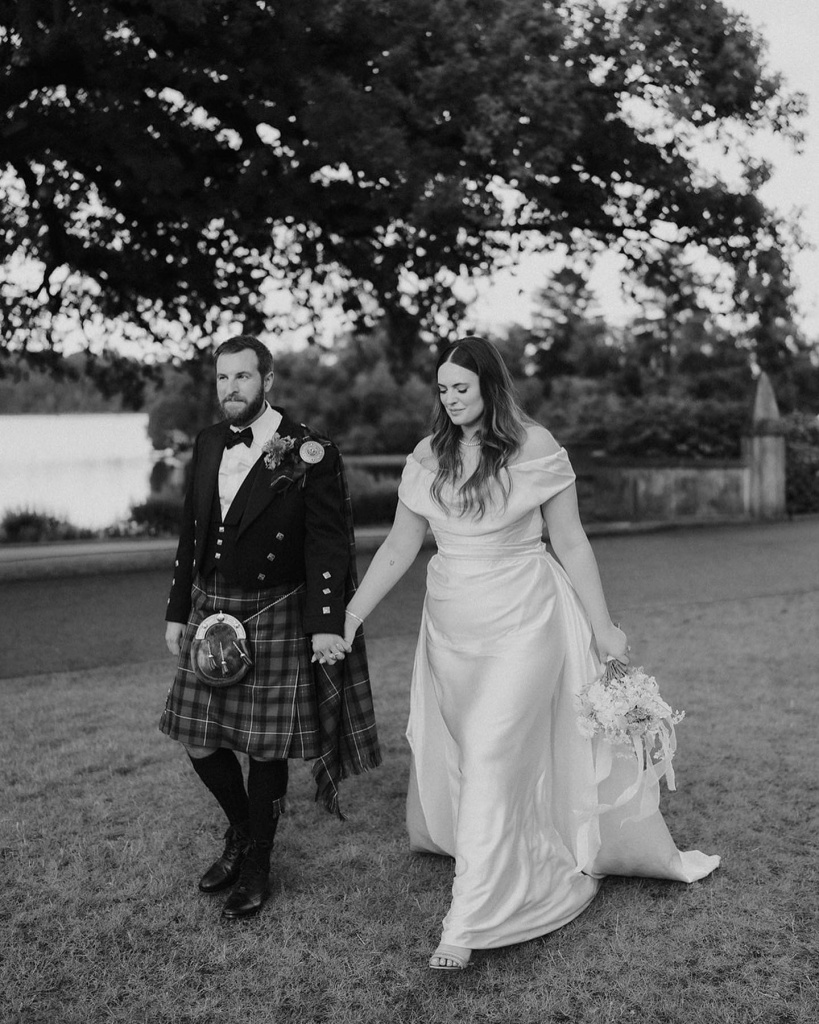
Kilt as a Key Element of Wedding Attire
The kilt is a quintessential element of traditional Scottish wedding attire, symbolizing national pride and cultural heritage. Worn by the groom and often by the male members of the wedding party, the kilt is made from tartan, a patterned cloth that represents specific Scottish clans. This garment is not just a piece of clothing but a representation of one's ancestry and identity. The kilt is typically paired with a sporran, a decorative pouch worn at the front, which adds both functionality and flair to the outfit. A traditional jacket, such as the Prince Charlie or Argyll, complements the kilt, along with a dress shirt and tie. Ghillie brogues, special shoes with long laces that wrap around the ankles, complete the ensemble. The wearing of the kilt during weddings highlights the importance of tradition in Scottish culture. It serves as a visual connection to the past while celebrating the couple's future. Overall, the kilt is more than just attire; it is a powerful symbol of Scottish heritage and pride.
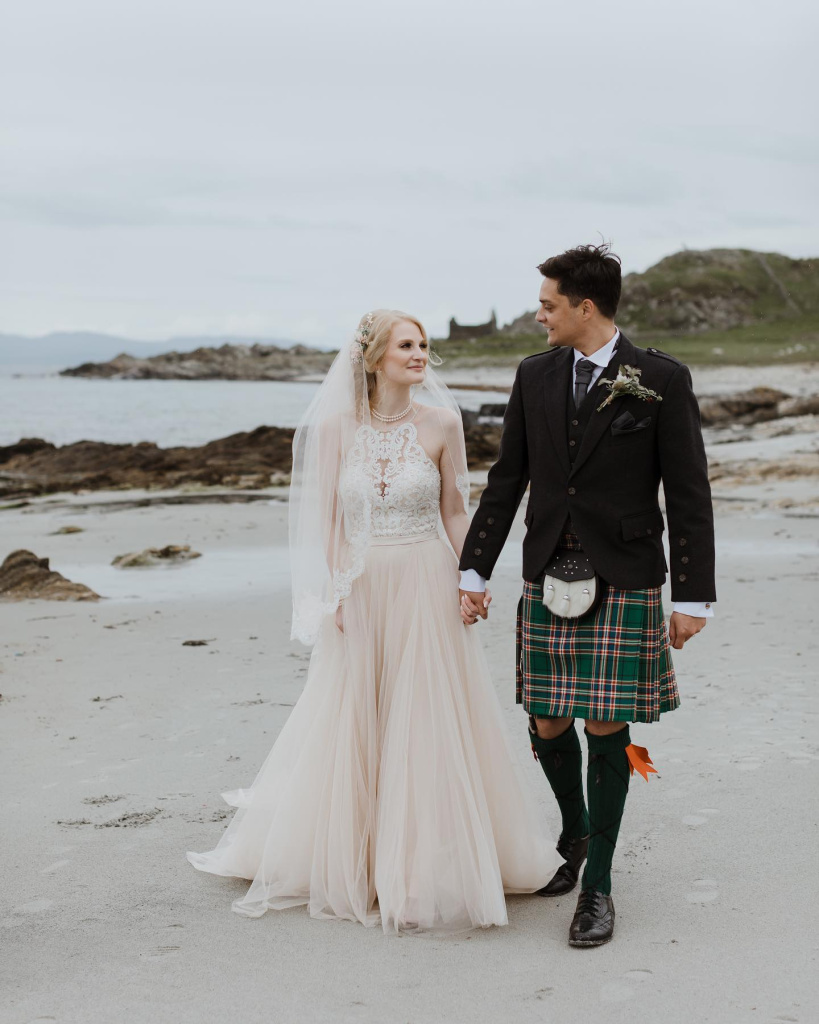
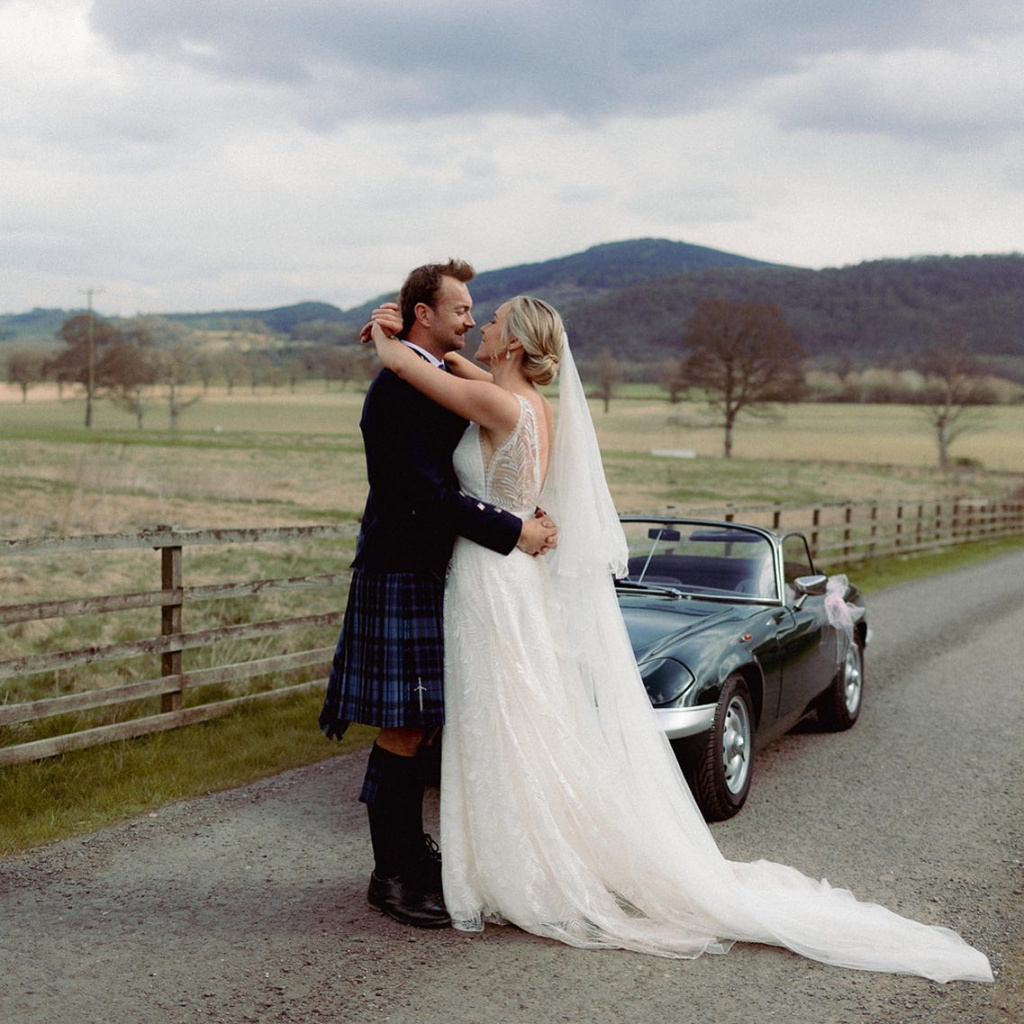
History of the Kilt
The kilt, a symbol of Scottish heritage, originated in the 16th century in the Scottish Highlands. Early forms of the kilt, called the "belted plaid" or "féileadh mór," were large pieces of woolen cloth wrapped around the body and fastened with a belt. These early kilts were practical, providing warmth and protection against the harsh Highland weather and doubling as blankets at night. As centuries passed, the kilt evolved from the large belted plaid to the more modern "féileadh beag" or small kilt, which is similar to the kilts worn today. This evolution included the development of pleating and a reduction in fabric, making the kilt easier to wear and more practical for everyday use. The kilt holds deep symbolism and cultural significance for the Scottish people, representing their heritage, traditions, and pride. It is often worn during important ceremonies, such as weddings, funerals, and other cultural events, highlighting its role in Scottish society. The kilt also represents the history and identity of Scottish clans, with each clan having its own unique tartan pattern. Tartan patterns, with their distinct colors and designs, symbolize different clans and regions and are an important part of Scotland's cultural fabric. Thus, the kilt is not only a garment but also a powerful emblem of Scottish history and identity.
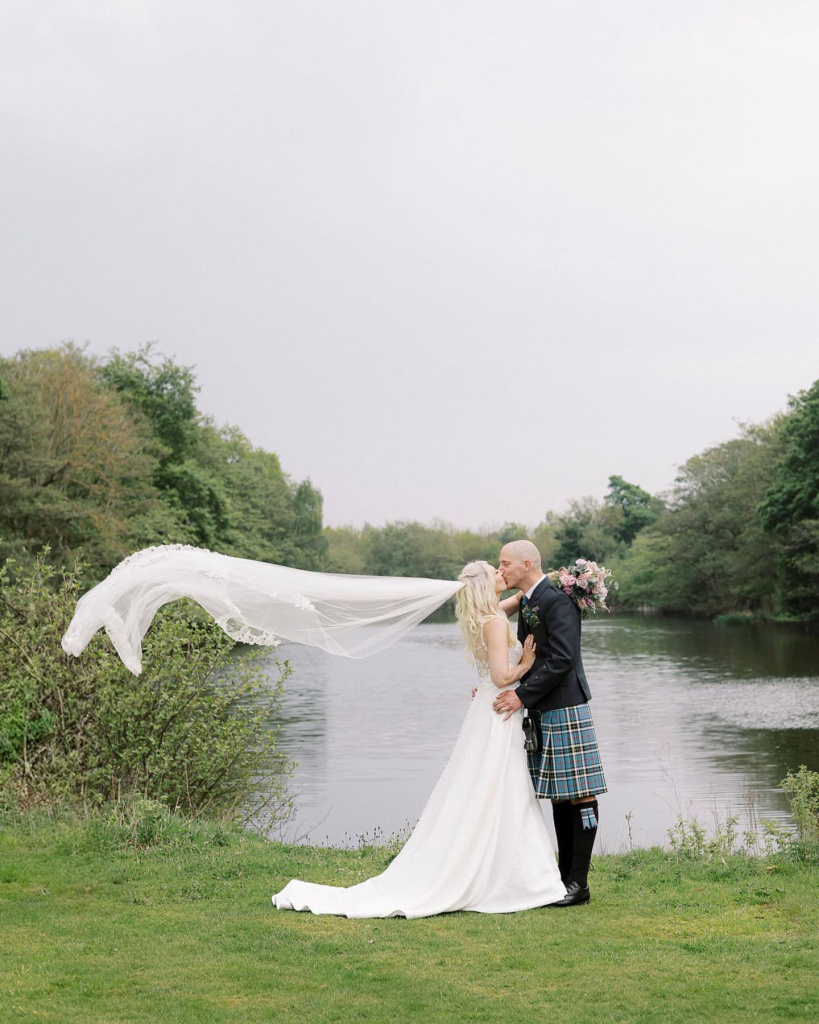
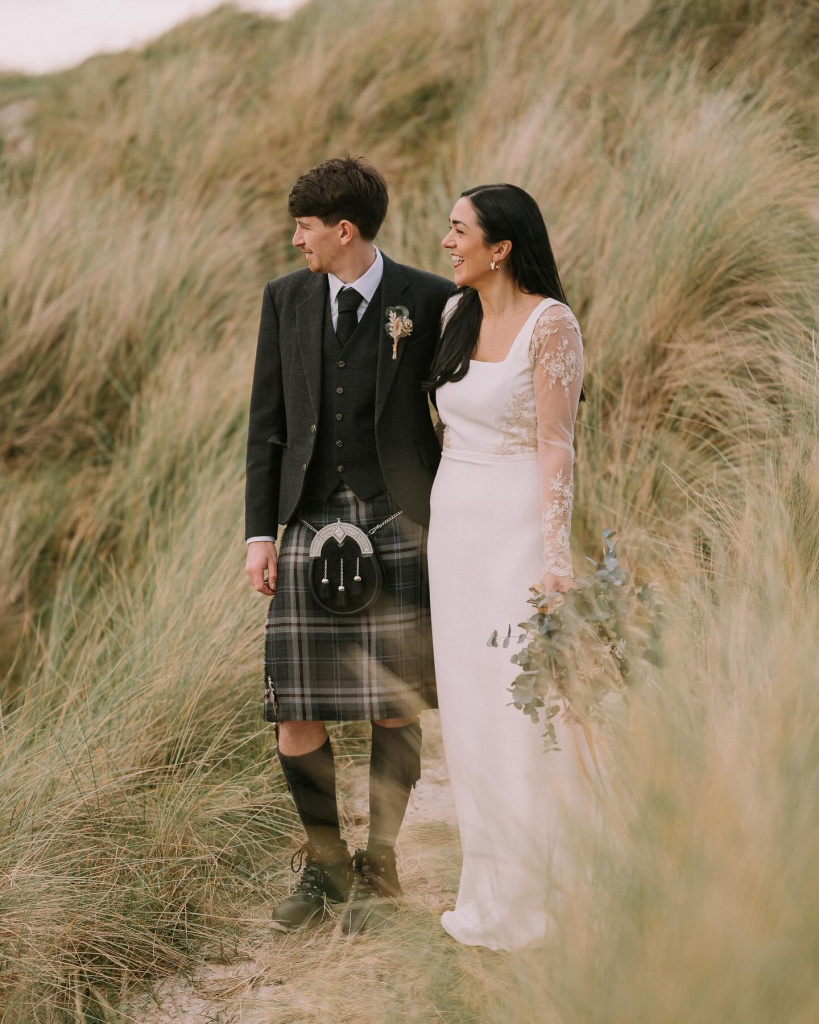
Early Forms and Their Purposes
Early forms of the kilt, known as the "belted plaid" or "féileadh mór," consisted of large pieces of woolen cloth wrapped around the body and secured with a belt. These kilts were multifunctional, providing warmth and protection against the harsh Highland weather. Additionally, they could be unfurled and used as blankets at night, making them practical for the nomadic lifestyle of Highlanders.
Evolution Over the Centuries
Over the centuries, the kilt evolved from the voluminous belted plaid to the more modern "féileadh beag" or small kilt. This transformation included the introduction of pleating, which made the garment more fitted and easier to wear. The reduction in fabric also made kilts more practical for daily use and various activities, reflecting changes in both fashion and lifestyle.
Symbolism and Cultural Significance
The kilt holds deep symbolism and cultural significance for the Scottish people, embodying their heritage, traditions, and national pride. It is not just a garment but a powerful emblem of Scottish identity, often worn during important cultural events such as weddings, funerals, and Highland games. The kilt represents a link to the past, a connection to ancestors, and a celebration of Scottish history.
Representation of Clans
In Scottish culture, the kilt is closely associated with the clan system, with each clan having its own distinctive tartan pattern. Wearing a kilt with a specific tartan signifies allegiance to a particular clan and honors familial heritage. This tradition of clan tartans underscores the importance of family ties and community in Scottish society.
Tartan Patterns and Their Meanings
Tartan patterns, characterized by their unique colors and designs, hold significant meanings and represent different clans and regions. Each tartan is registered and recognized as belonging to a specific clan, symbolizing its unique history and identity. The colors and patterns of tartans can convey various messages, such as geographical origin, social status, and even personal achievements, making them an integral part of Scotland's cultural fabric.
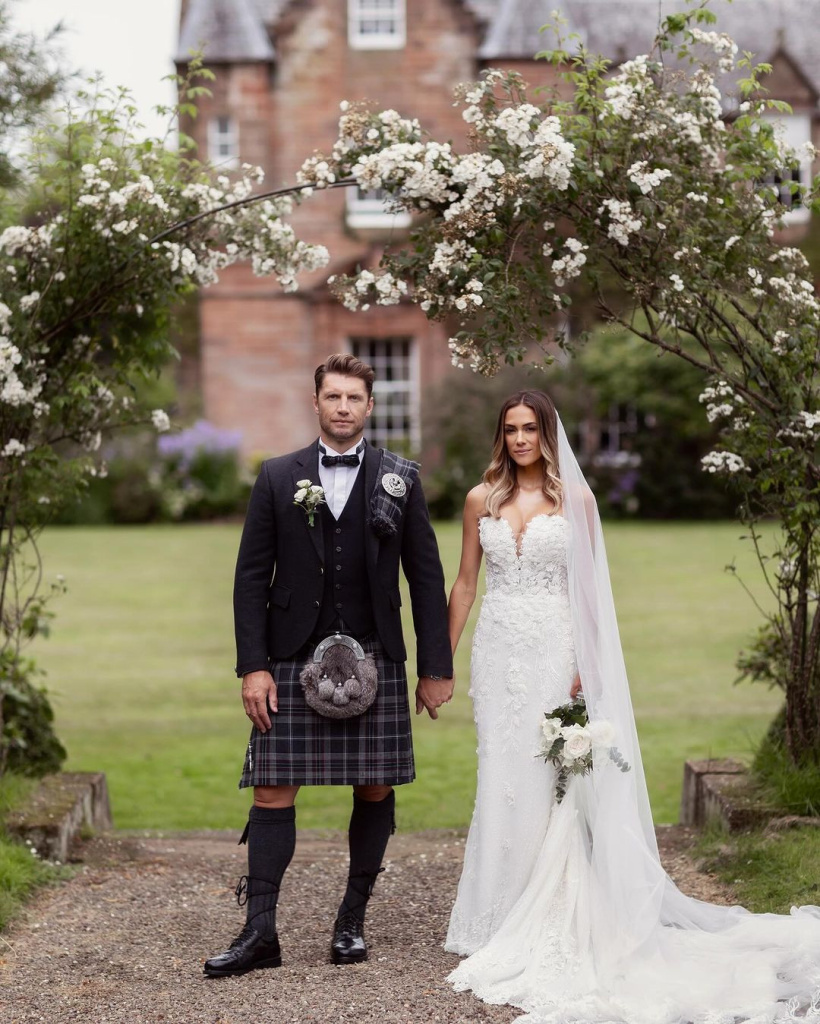
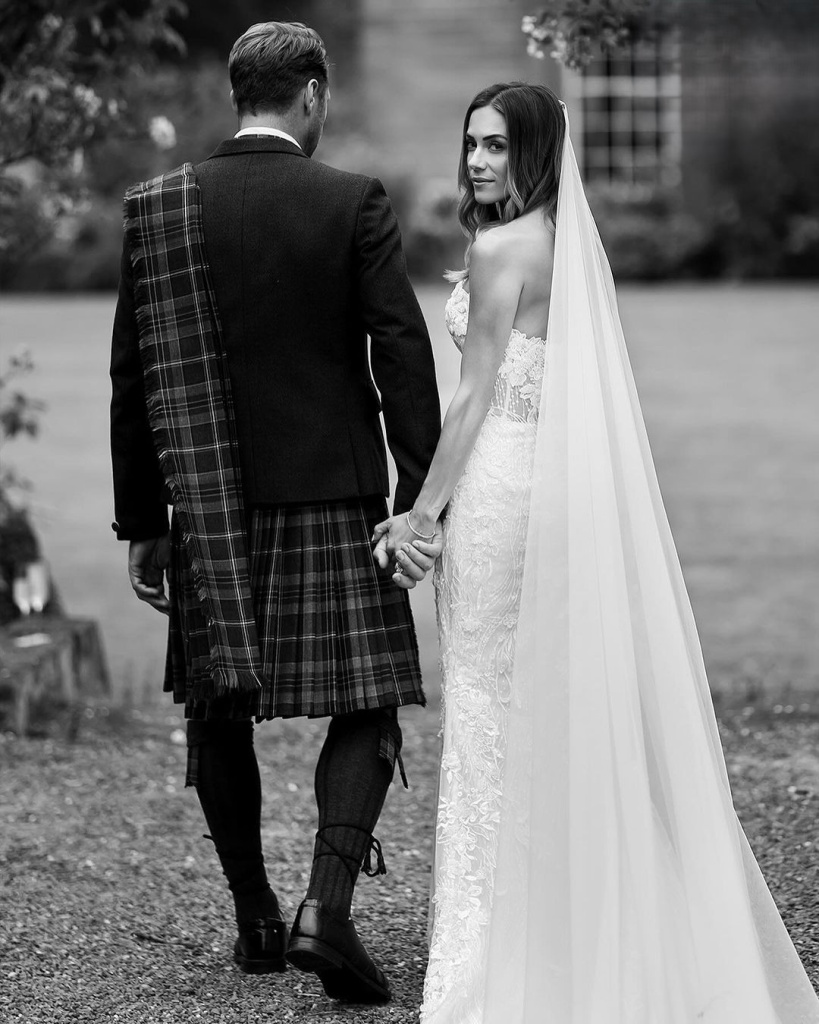
The Kilt in Modern Scottish Weddings
The kilt remains a popular and iconic garment in Scotland and beyond, symbolizing national pride and cultural heritage. Its presence is especially notable during traditional events, such as Highland games, parades, and formal occasions. In contemporary times, the kilt has also gained international recognition, being worn by people of Scottish descent and enthusiasts worldwide, thereby preserving and promoting Scottish culture.
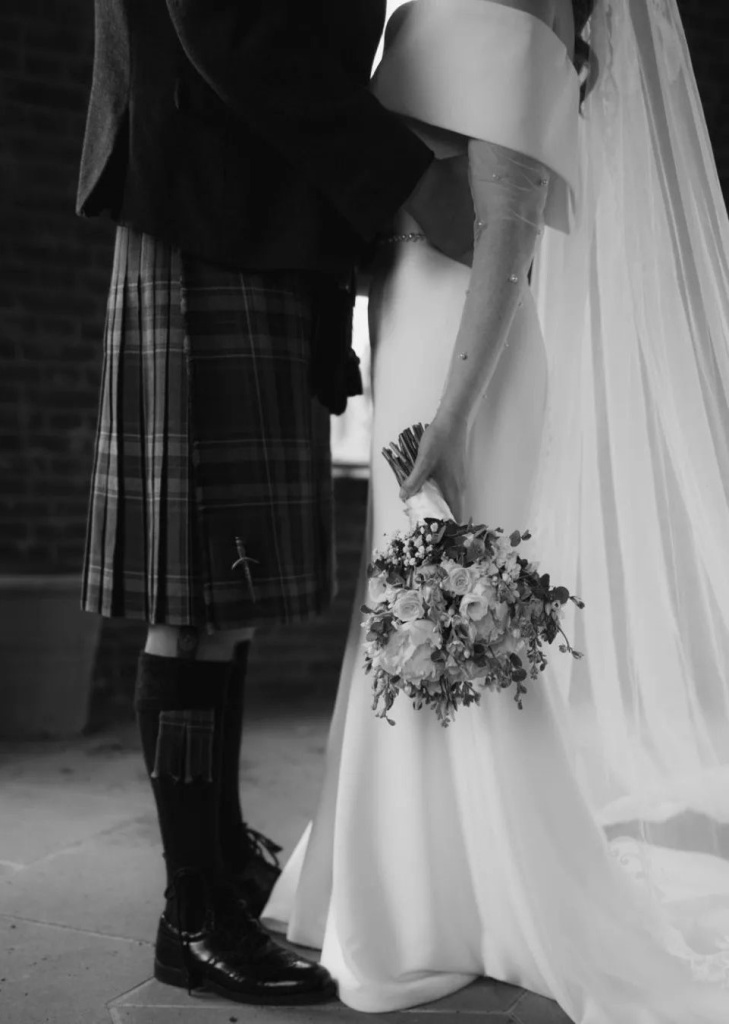
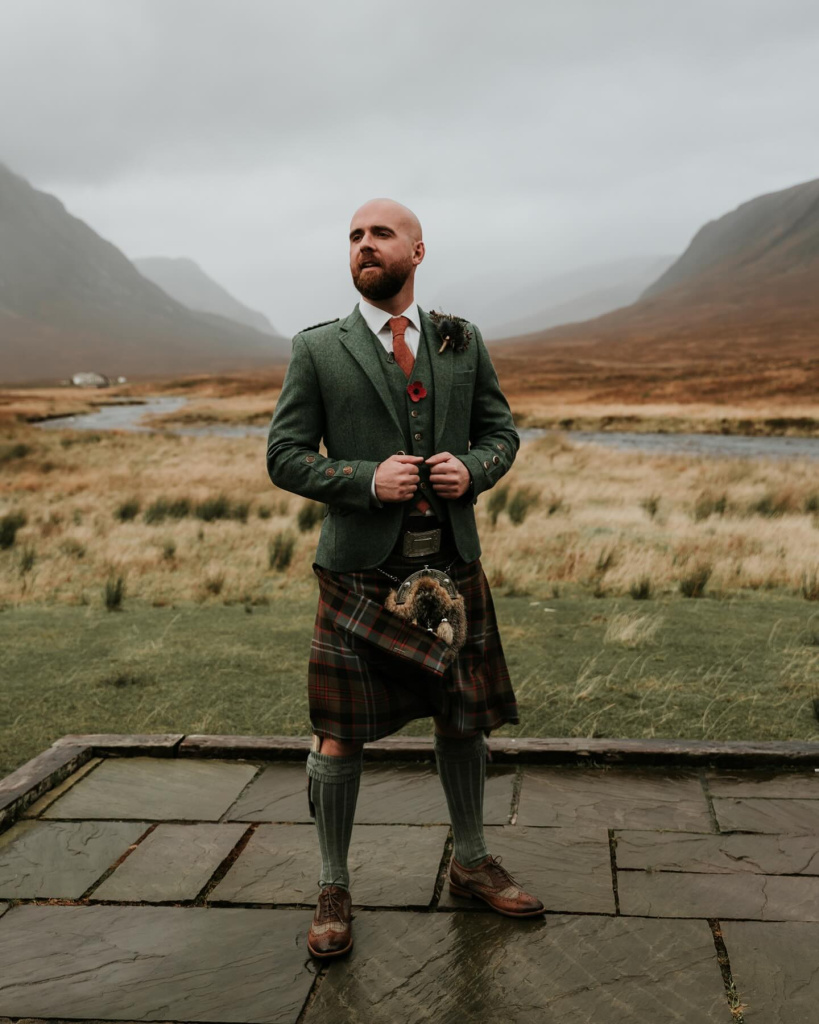
Traditional vs. Modern Kilts
When choosing a kilt for a wedding, one must decide between traditional and modern styles. Traditional kilts often adhere to historical patterns and methods of construction, featuring classic tartans and full kilt outfits, including sporrans, kilt pins, and jackets. Modern kilts, on the other hand, may incorporate contemporary fabrics and designs, offering a fresh take on the classic look while maintaining the essence of the kilt.
Factors to Consider
Several factors should be considered when selecting a kilt for a wedding. Clan affiliation is crucial for those wishing to honor their heritage, as specific tartans are linked to particular clans. The choice of colors and patterns can also reflect personal preferences, themes of the wedding, or seasonal influences. Additionally, considering the formality of the event and the comfort of the wearer is essential to ensure the kilt complements the overall wedding attire.
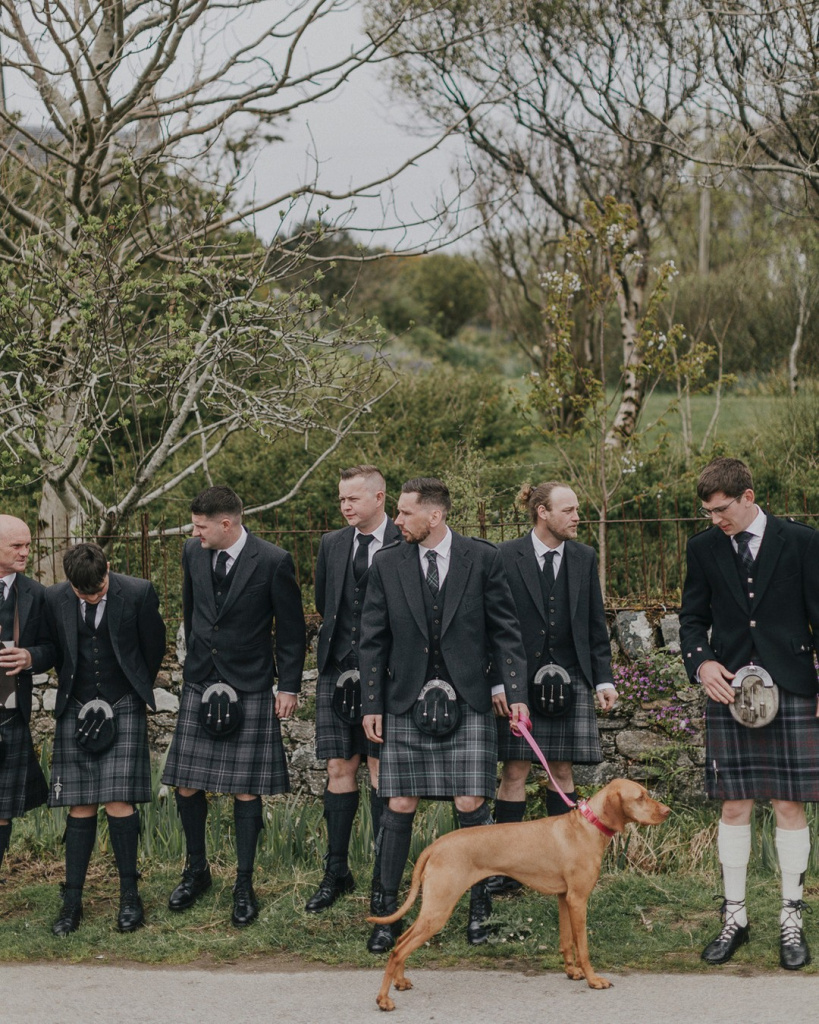
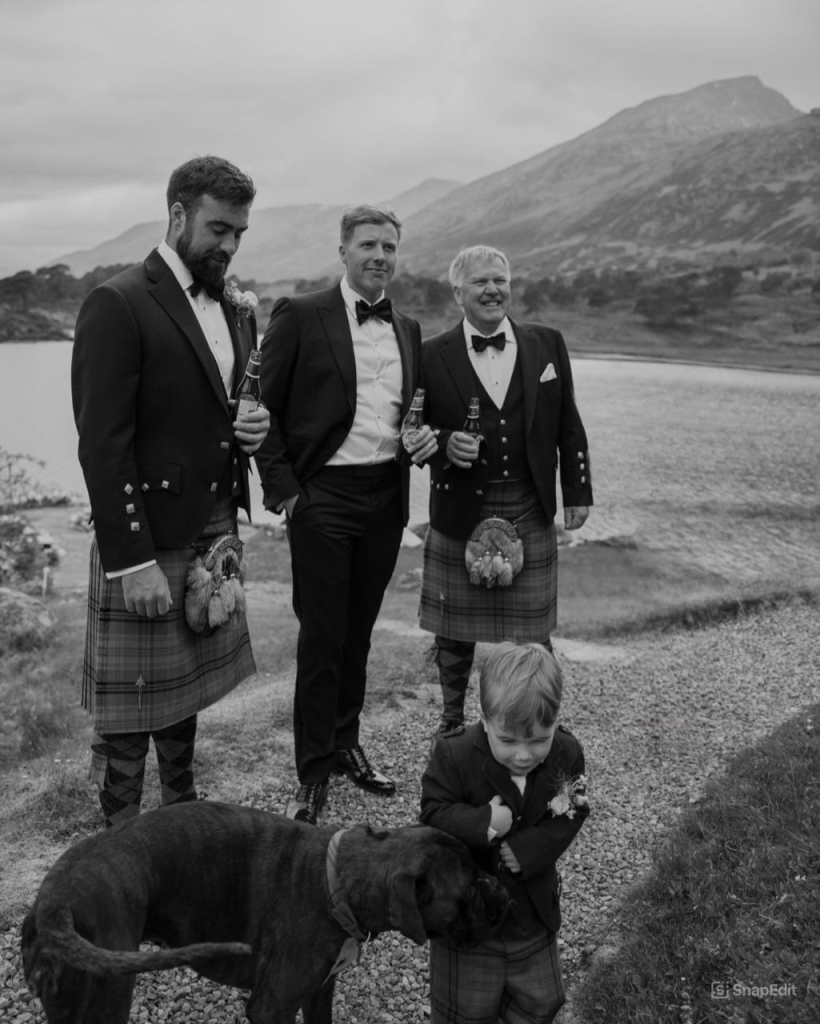
Groom’s Attire
For the groom, wearing a kilt is a distinguished way to showcase Scottish heritage on his wedding day. The groom's kilt outfit typically includes a matching tartan waistcoat, jacket, sporran, kilt hose, and brogues. This ensemble not only highlights the groom's cultural pride but also adds a unique and memorable touch to the wedding ceremony.
Role of Groomsmen and Other Male Participants
Groomsmen and other male participants in the wedding often wear kilts to create a cohesive and traditional look. Their kilts may match the groom’s tartan or feature complementary patterns, enhancing the visual appeal and unity of the wedding party. This practice emphasizes the collective celebration of Scottish culture and reinforces the significance of the occasion.
Accessories and Complements
The sporran, a small pouch worn at the front of the kilt, is an essential accessory for both practical and aesthetic purposes. It provides storage space and adds a touch of elegance to the overall outfit. The sgian-dubh, a small ceremonial knife traditionally tucked into the top of the kilt hose, is another key accessory, symbolizing Scottish heritage and adding an element of formality. The kilt pin, typically worn on the front apron of the kilt, secures the fabric and serves as a decorative element, often featuring clan crests or other meaningful symbols.
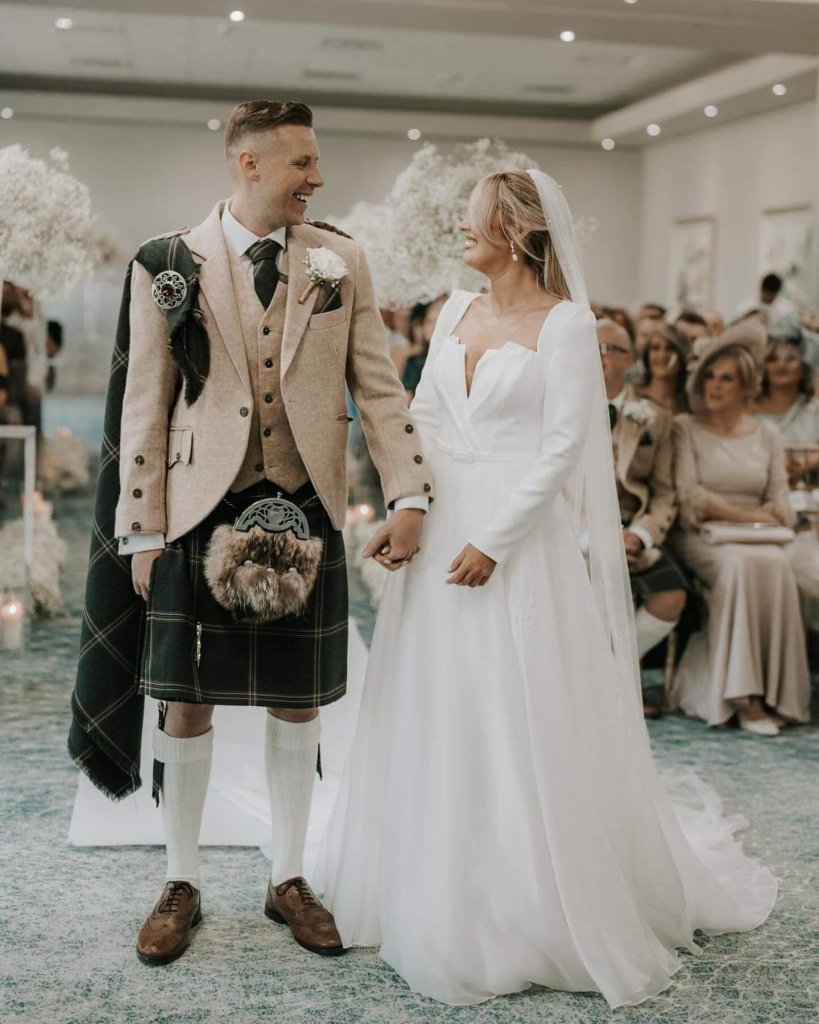
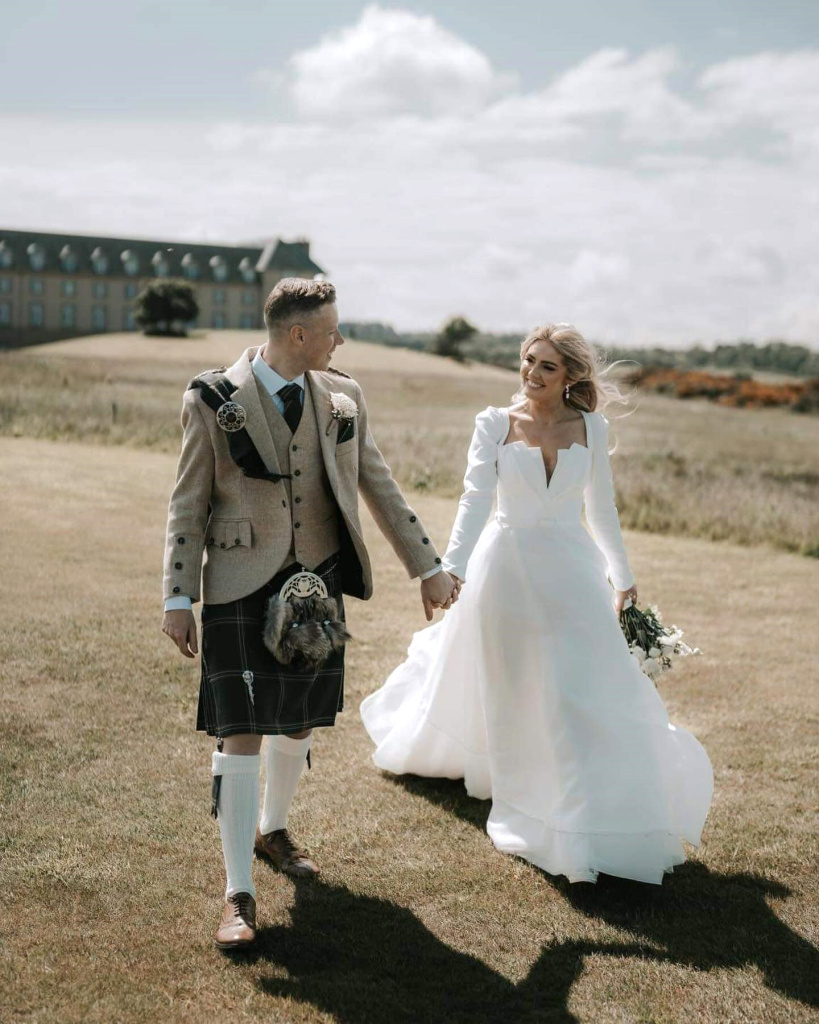
Footwear and Hose
Footwear and hose are crucial components of the kilt outfit, ensuring comfort and completing the traditional look. Ghillie brogues, with their distinctive lace-up design, are the preferred shoes, providing both style and functionality. Kilt hose, or socks, are worn up to the knee and often topped with flashes, which are small fabric strips that add a pop of color and help keep the hose in place. Together, these elements create a polished and authentic appearance.
Jackets and Shirts
Jackets and shirts play a significant role in the overall kilt ensemble, contributing to its formality and style. The Prince Charlie jacket, with its short tails and ornate buttons, is a popular choice for formal occasions, often paired with a waistcoat and a bow tie. The Argyle jacket, featuring a more versatile and less formal design, can be worn with a variety of shirts and ties, making it suitable for both formal and semi-formal events. Both jackets enhance the kilt's traditional look while allowing for personal expression.
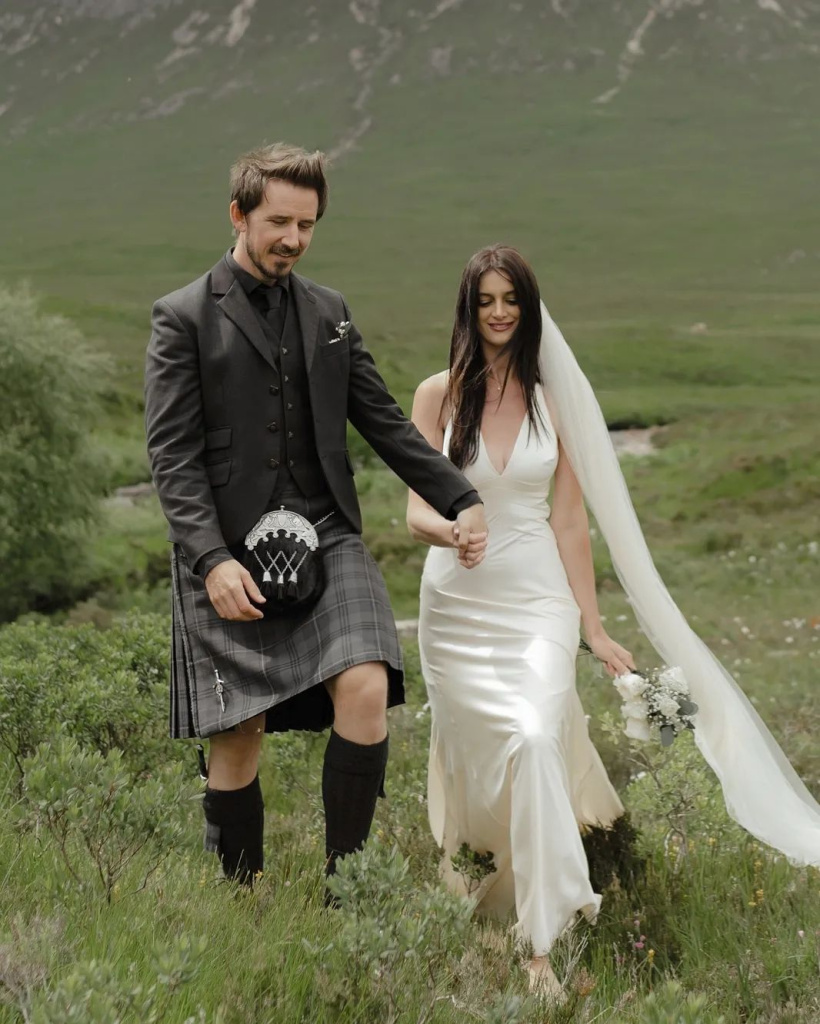
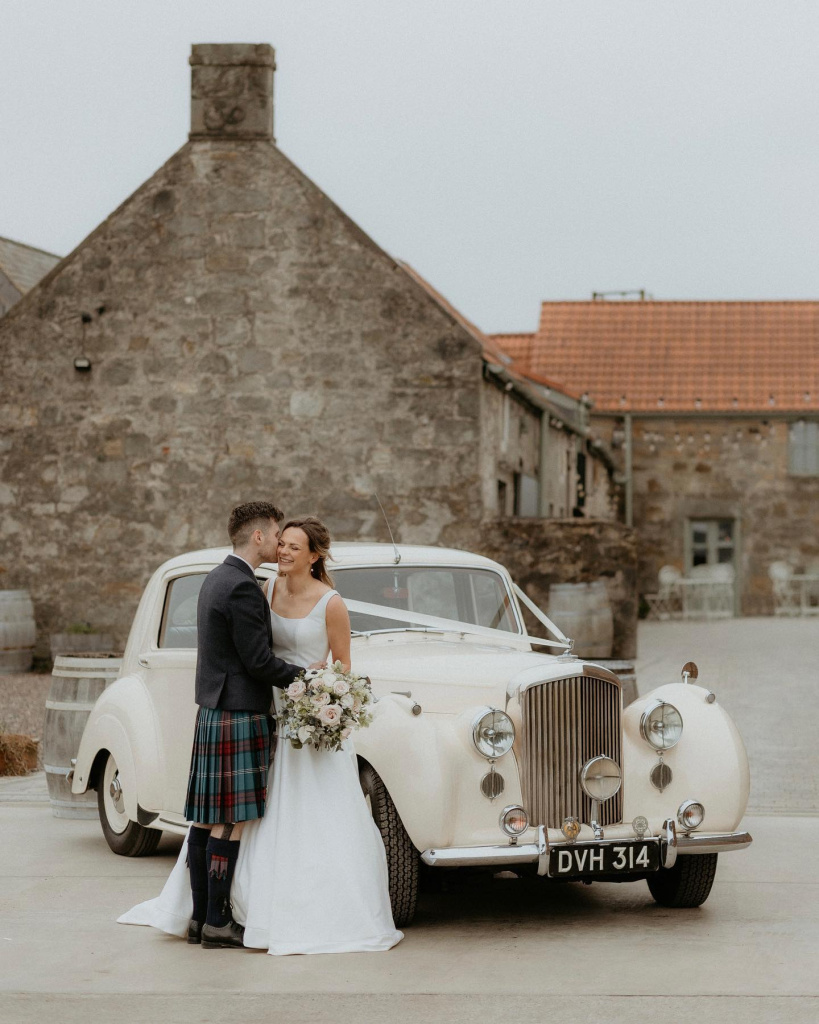
Importance of the Fly Plaid and Brooch
The fly plaid is a length of tartan fabric draped over the shoulder and secured with a brooch, adding a regal and dramatic flair to the kilt outfit. It is typically worn during formal occasions, symbolizing the wearer's connection to their clan and heritage. The brooch, often ornate and featuring clan symbols or other meaningful designs serves both as a functional pin and as a decorative element. Together, the fly plaid and brooch elevate the kilt ensemble, highlighting its cultural significance and the wearer's pride in their Scottish roots.
Incorporating Tradition and Personal Style
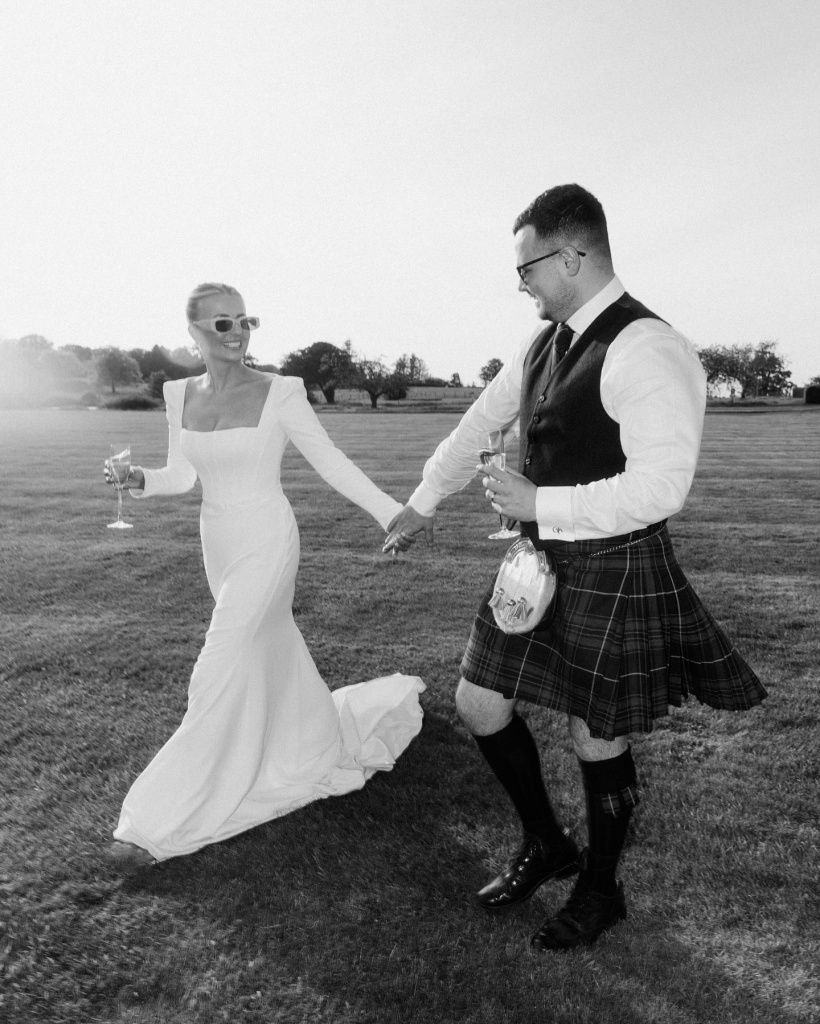
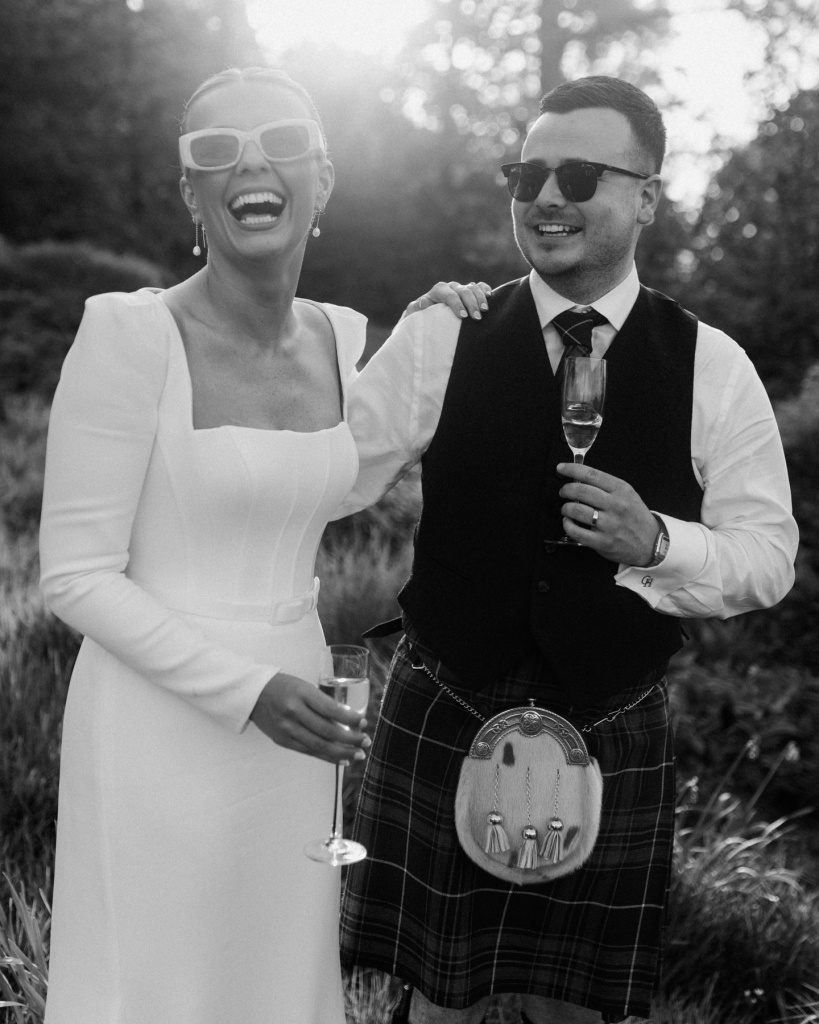
Balancing tradition with personal preferences in the context of wearing kilts involves honoring cultural heritage while allowing room for individual expression. Many Scots adhere to traditional tartans and styles that reflect their clan affiliations or regional identities, ensuring continuity with centuries-old customs. However, modern wearers also embrace customization, adjusting colors, patterns, and accessories to suit personal tastes and thematic considerations for events like weddings or formal gatherings. Customizing kilts and accessories allows for a unique touch, such as incorporating family crests on sporran flaps or selecting unconventional tartan combinations that hold personal significance. This blend of tradition and customization not only respects Scottish heritage but also accommodates contemporary fashion sensibilities and the desire for individuality. Moreover, contemporary trends in kilt wearing often include adaptations that cater to diverse preferences and lifestyles, such as lighter-weight fabrics for comfort, or stylized accessories like minimalist kilt pins or modern interpretations of traditional jackets. These adaptations ensure that kilts remain relevant and adaptable in today's cultural landscape, appealing to both purists and those seeking to integrate Scottish tradition into modern attire seamlessly.
Cultural and Emotional Impact
Wearing a kilt at a wedding holds profound cultural significance, especially for those of Scottish descent or with ties to Scottish heritage. It symbolizes a connection to tradition and history, representing the groom's pride in his Scottish roots. The kilt is more than just a garment; it serves as a visible expression of commitment to preserving and honoring familial and cultural ties. Its presence adds a unique and memorable touch to the wedding ceremony, often becoming a focal point of admiration and conversation among guests.
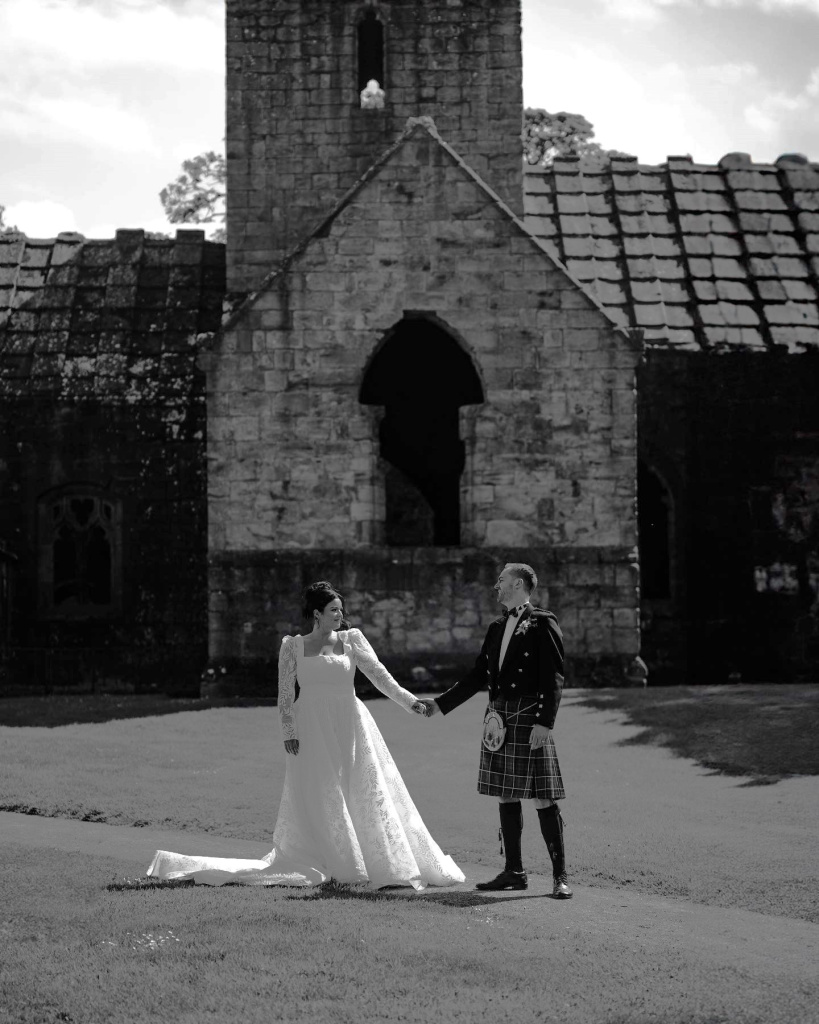
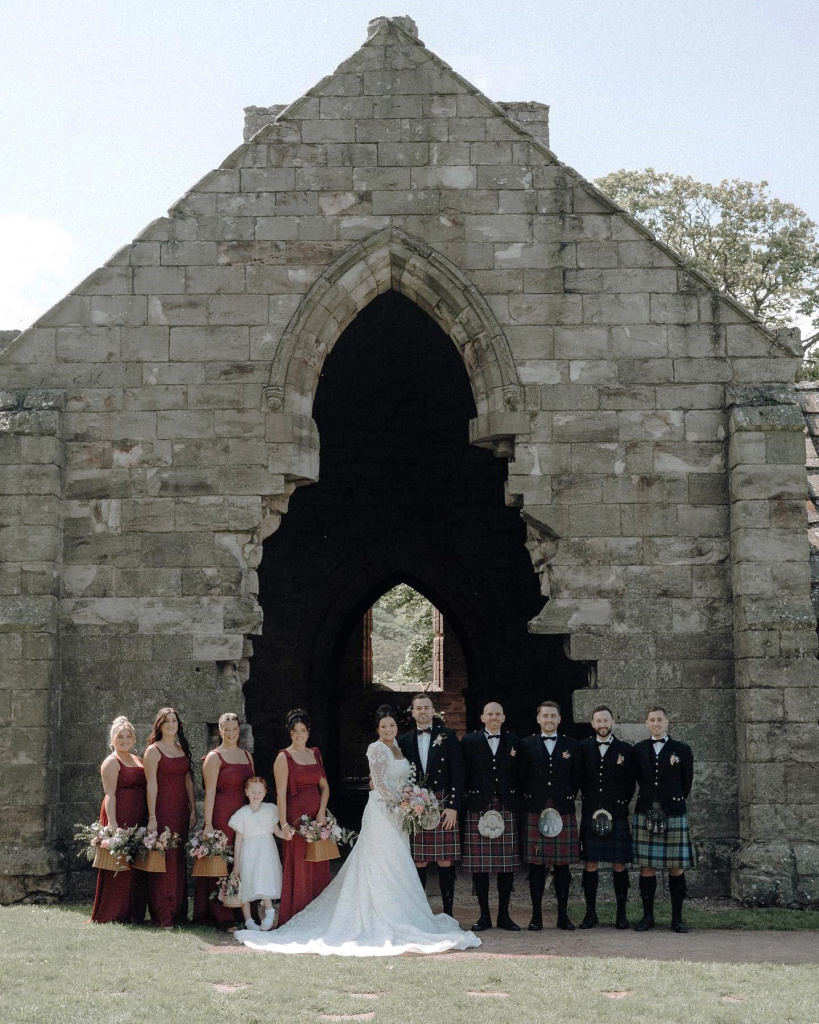
Family and Clan Pride
For many wearers, wearing a kilt at a wedding is an opportunity to display their family's tartan and clan affiliations proudly. Each tartan carries its own history and symbolism, reflecting the lineage and traditions of the wearer's ancestors. This display of clan pride fosters a sense of belonging and unity within the family, as well as among fellow clan members present at the wedding. It reinforces familial bonds and traditions, celebrating shared heritage and values passed down through generations.
The Emotional Resonance for the Couple and Guests
The act of wearing a kilt at a wedding carries emotional resonance for both the couple and their guests. For the couple, it represents a connection to their cultural identity and a nod to their shared history. It evokes feelings of nostalgia, pride, and reverence for their heritage, enriching the wedding ceremony with layers of meaning and significance. Guests, regardless of their own cultural background, often appreciate the kilt's presence for its ceremonial and symbolic value. It becomes a symbol of love, commitment, and respect for traditions, creating a memorable and emotionally resonant atmosphere for everyone present.
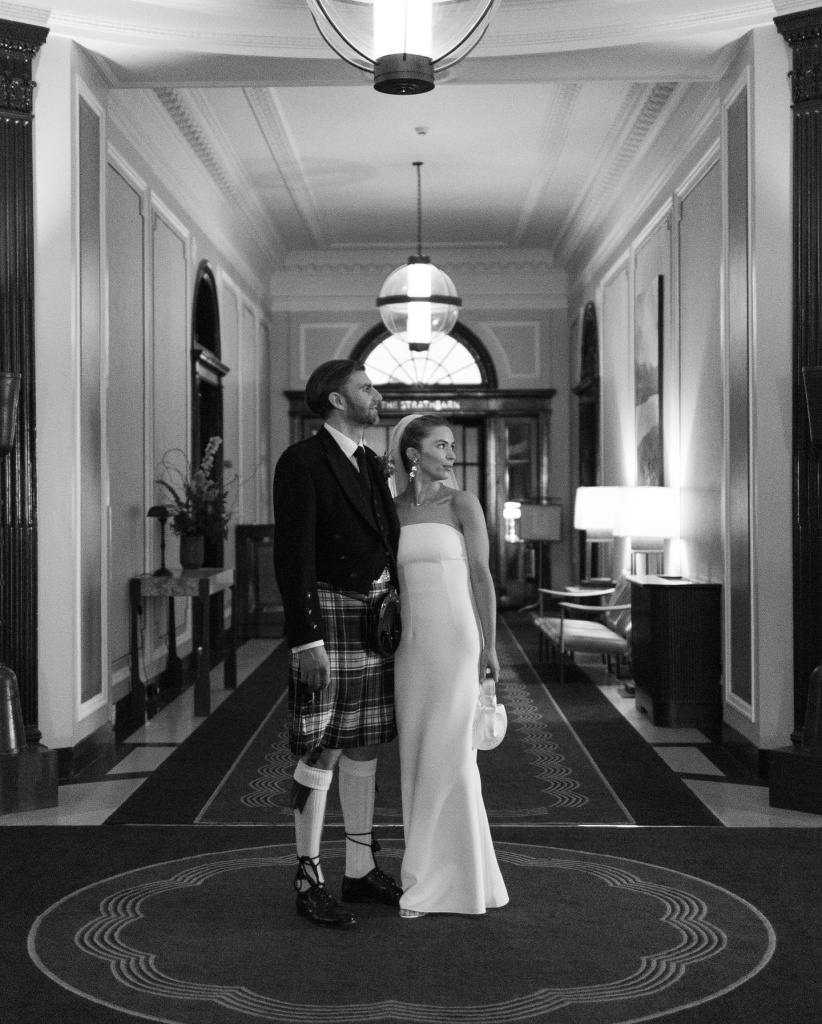
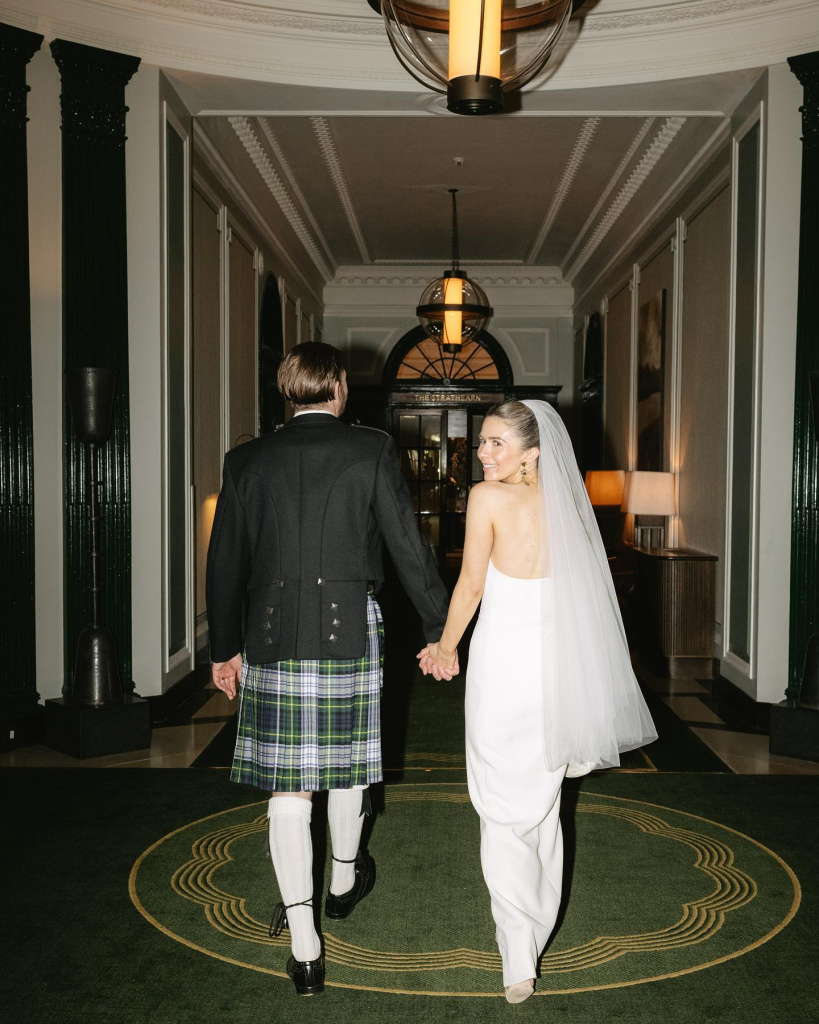
Kilts in Scottish weddings embody a timeless tradition that resonates deeply with both Scots and international admirers alike. Beyond their aesthetic appeal, kilts symbolize a profound connection to Scottish heritage and cultural identity. They serve as more than just attire; they represent a commitment to honoring ancestral roots and celebrating shared lineage. In Scottish weddings, kilts play a pivotal role in uniting families and clans, with each tartan telling a story of history and pride. The sight of groomsmen and male family members clad in kilts, often adorned with clan-specific tartans and traditional accessories like sporrans and sgian-dubhs, evokes a sense of unity and reverence for tradition. For the couple exchanging vows, the presence of kilts adds a poignant touch, reflecting their respect for customs passed down through generations. Beyond their ceremonial significance, kilts create a visually striking ambiance, enhancing the atmosphere of joy and festivity at Scottish weddings. Guests, whether Scottish or not, often find themselves captivated by the elegance and symbolism of kilts, appreciating their role in enriching the cultural tapestry of the wedding celebration. Ultimately, kilts in Scottish weddings exemplify the enduring allure of tradition, blending heritage with contemporary celebrations in a way that is both timeless and profoundly meaningful.







